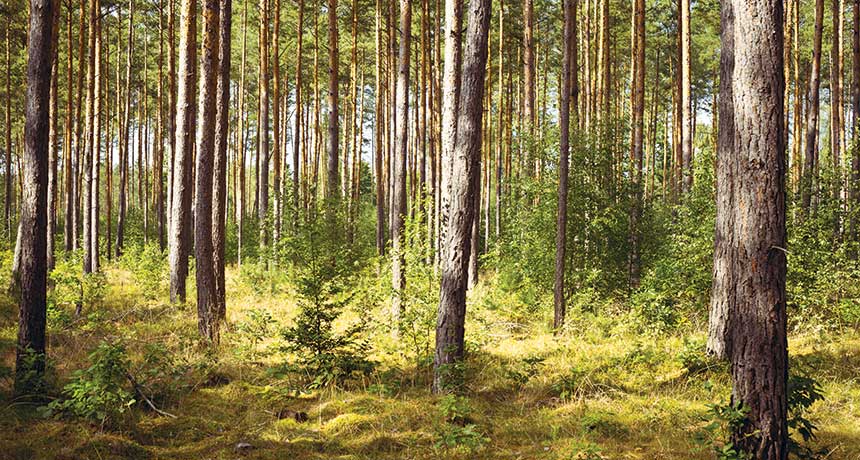Forest management not so hot at fighting warming
Tree-planting strategies in Europe make climate change worse, study suggests

LEAFY GREENS Tinkering with Europe’s forests has increased populations of dark-leafed conifer trees that reflect less sunlight (pine forest in Germany, shown), compared with lighter-colored broad-leaved trees, and so has failed to alleviate climate change, new research shows.
HausOnThePrairie/iStockphoto